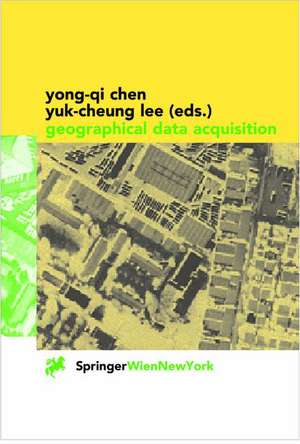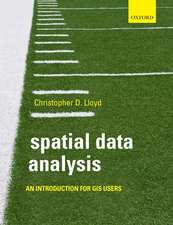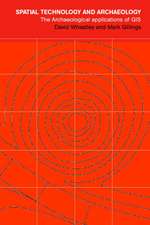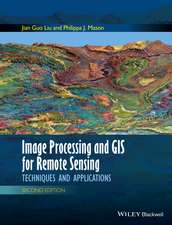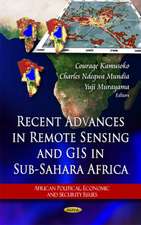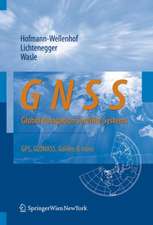Geographical Data Acquisition
Editat de Yong-Qi Chen, Yuk-Cheung Leeen Limba Engleză Paperback – dec 2000
Preț: 640.06 lei
Preț vechi: 753.01 lei
-15% Nou
Puncte Express: 960
Preț estimativ în valută:
122.48€ • 128.46$ • 101.96£
122.48€ • 128.46$ • 101.96£
Carte tipărită la comandă
Livrare economică 01-15 aprilie
Preluare comenzi: 021 569.72.76
Specificații
ISBN-13: 9783211834725
ISBN-10: 3211834729
Pagini: 284
Ilustrații: XIV, 265 p. 104 illus.
Dimensiuni: 155 x 235 x 15 mm
Greutate: 0.41 kg
Ediția:Softcover reprint of the original 1st ed. 2001
Editura: SPRINGER VIENNA
Colecția Springer
Locul publicării:Vienna, Austria
ISBN-10: 3211834729
Pagini: 284
Ilustrații: XIV, 265 p. 104 illus.
Dimensiuni: 155 x 235 x 15 mm
Greutate: 0.41 kg
Ediția:Softcover reprint of the original 1st ed. 2001
Editura: SPRINGER VIENNA
Colecția Springer
Locul publicării:Vienna, Austria
Public țintă
ResearchCuprins
1 Geographical Data and Its Acquisition.- 1.1 Introduction.- 1.2 The Nature of Geographical Data.- 1.3 Define the Nature and Scope of the Database.- 1.4 Identify the Types of Features.- 1.5 Design the Geographical Database.- 1.6 A Survey of Data Acquisition Methods.- 1.7 Geo-Reference Data.- 1.8 Trends in Spatial Data Acquisition.- 2 Coordinate Systems and Datum.- 2.1 Coordinate Systems.- 2.2 Geoid and Mean Sea Level.- 2.3 Datum.- 2.4 Ellipsoid.- 2.5 Geodetic and Plane Coordinate Systems.- 3 Transformation of Coordinates between Cartesian Systems.- 3.1 Introduction.- 3.2 Basic Concepts of Coordinate Transformations.- 3.3 Models for Coordinate Transformation.- 3.4 Derivation of Transformation Models.- 3.5 Determination of Transformation Parameters.- 4 Map Projections.- 4.1 Introduction.- 4.2 The Shape of the Earth.- 4.3 Map Projections as Mathematical Transformations.- 4.4 Geometric Distortions on Maps.- 4.5 Preserving Some of the Geometric Properties.- 4.6 Minimizing Geometric Distortions for a Project Area.- 4.7 Naming of Map Projections.- 4.8 Rectangular Grid System.- 4.9 The UTM Projection.- 4.10 The UTM Grid.- 4.11 Integrating Maps of Different Projections.- 4.12 Map Projection and Digital Maps.- 4.13 Conclusions.- 5 Geographical Data from Analogue Maps.- 5.1 Introduction.- 5.2 Vector and Raster Models.- 5.3 The Choice between Vector and Raster Models.- 5.4 Vector Digitizing.- 5.5 Raster Scanning.- 5.6 Conclusion.- 6 Ground-Based Positioning Techniques.- 6.1 Introduction.- 6.2 Measurement of Distances and Angles.- 6.3 Measurement of Height.- 6.4 Reduction of Coordinates to Datum.- 6.5 Detail Surveys.- 7 Satellite-Based Positioning.- 7.1 Concept of Satellite Positioning.- 7.2 Absolute and Relative Positioning.- 7.3 Differential GPS (DGPS) Technique.- 7.4 PositioningTechniques for Surveying.- 7.5 Real-Time Kinematic Positioning.- 7.6 Future Developments.- 8 Techniques for Underwater Data Acquisition.- 8.1 Introduction and Overview.- 8.2 Tidal and Other Water Level Changes.- 8.3 Soundings.- 8.4 Survey Preparation and Data Processing.- 8.5 Summary and Outlook on Future Developments.- 9 Image Acquisition.- 9.1 Introduction.- 9.2 Image Types.- 9.3 Imaging Devices.- 9.4 Air Borne Imagery.- 9.5 Space Borne Imagery.- 10 Orthoimage Generation and Measurement from Single Images.- 10.1 Introduction.- 10.2 The Principles for the Generation of Orthoimages.- 10.3 Measurement from Single Image.- 10.4 Procedure for Geo-Referencing Image and Measured Data.- 10.5 Summary.- 11 Geometric Data from Images.- 11.1 Introduction.- 11.2 Stereoscopic Vision.- 11.3 Stereo Photographs.- 11.4 Height from Stereoscopic Parallax.- 11.5 Planimetrie Position from a Stereopair.- 11.6 Analytical Methods.- 11.7 Digital Methodologies.- 12 Thematic Information from Digital Images.- 12.1 Factors to be Considered for Thematic Information Extraction.- 12.2 Feature Identification and Image Interpretation.- 12.3 Image Processing for Thematic Information Extraction.- 12.4 Summary.- Current Trends in Geographical Data Acquisition: An Epilogue.- References.
Caracteristici
First book on all aspects of acquisition of geographical data Easy-to-read, semi-technical style Overview about the theory behind various data acquisition methods
